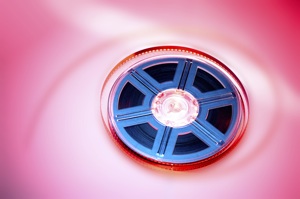A magazine where the digital world meets the real world.
On the web
- Home
- Browse by date
- Browse by topic
- Enter the maze
- Follow our blog
- Follow us on Twitter
- Resources for teachers
- Subscribe
In print
What is cs4fn?
- About us
- Contact us
- Partners
- Privacy and cookies
- Copyright and contributions
- Links to other fun sites
- Complete our questionnaire, give us feedback
Search:
100,000 frames

Ben Stephenson of the University of Calgary gives us a guide to the basics of animation.
Animation isn’t a new field – artists have been creating animations for over a hundred years. While the technology used to create those animations has changed immensely during that time, modern computer generated imagery continues to employ some of the same techniques that were used to create the first animations.
The hard work of hand drawing
During the early days of animation, moving images were created by rapidly showing a sequence of still images. Each still image, referred to as a frame, was hand drawn by an artist. By making small changes in each new frame, characters were created that appeared to be walking, jumping and talking, or doing anything else that the artist could imagine.
In order for the animation to appear smooth, the frames need to be displayed quickly – typically at around 24 frames each second. This means that one minute of animation required artists to draw over 1400 frames. That means that the first feature-length animated film, a 70-minute Argentinean film called The Apostle, required over 100,000 frames to create.
Creating a 90-minute movie, the typical feature length for most animated films, took almost 130,000 hand drawn frames. Despite these daunting numbers, many feature length animated movies have been created using hand-drawn images.
Drawing with data
Today, many animations are created with the assistance of computers. Rather than simply drawing thousands of images of one character using a computer drawing program, artists can create one mathematical model to represent that character, from which all of his or her appearances in individual frames are generated. Artists manipulate the model, changing things like the position of the character’s limbs (so that the character can be made to walk, run or jump) and aspects of the character’s face (so that it can talk and express emotions). Furthermore, since the models only exist as data on a computer they aren’t confined by the physical realities that people are. As such, artists also have the flexibility to do physically impossible things such as shrinking, bending or stretching parts of a character. Remember Elastigirl, the stretchy mum in The Incredibles? All made of maths.
Once all of the mathematical models have been positioned correctly, the computer is used to generate an image of the models from a specific angle. Just like the hand- drawn frames of the past, this computer- generated image becomes one frame in the movie. Then the mathematical models representing the characters are modified slightly, and another frame is generated. This process is repeated to generate all of the frames for the movie.
The more things change
You might have noticed that, despite the use of computers, the process of generating and displaying the animation remains remarkably similar to the process used to create the first animations over 100 years ago. The animation still consists of a collection of still images. The illusion of smooth movement is still achieved by rapidly displaying a sequence of frames, where each frame in the sequence differs only slightly from the previous one.
The key difference is simply that now the images may be generated by a computer, saving artists from hand drawing over 100,000 copies of the same character. Hand-drawn animation is still alive in the films of Studio Ghibli and Disney’s recent The Princess and the Frog, but we wonder if the animators of hand-drawn features might be tempted to look over at their fellow artists who use computers and shake an envious fist. A cramped fist, too, probably.


